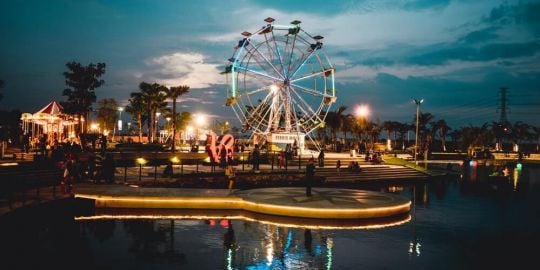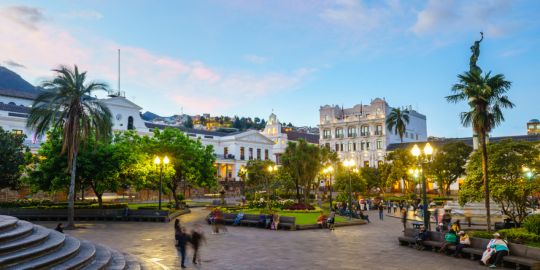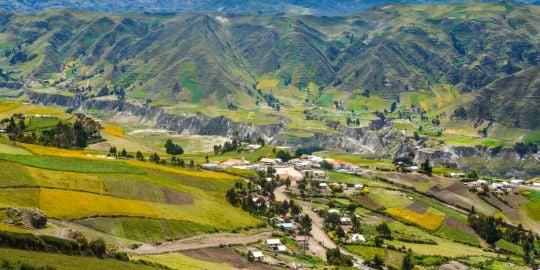One of the hidden differences between Ecuador and other places is the widespread use here of the low-cost "calefon" (kah-leh-PHONE); in apartments we're talking typically about a small tankless water heater.
In my condo complex in Centro Historico, Quito, built just a few years ago, the condo units were installed with the world's cheapest water heaters, located in the kitchens.
For my first months there, I thought the main problem was that I couldn't properly control the heating levels in the bathroom shower and so the water there was often uncomfortably cold and hard to moderate.
Then one day I came back from Mariscal sector, and learned what the real "main problem" was, when I saw that my apartment was flooded. There was an inch and a half high of water in the kitchen and the dining area. A ten-foot-square area of the carpeted MBR was flooded as well.
The water pressure from outside had come in and burst the cheap plastic piece at the calefon's water output. Water was still spraying with great force all over the place.
After cutting off the spray, removing the floodwaters and searching for answers, I got some information from my friend John Caselli of the South American Explorers (partially pictured at the right in my avatar photo) who has owned rental properties in the Quito area.
John told me that the water pressure is not constant in Quito, especially problematic at night, and problems such as I experienced were known to happen with cheap calefones. I also learned from my "concierge" that many residents in my complex had replaced their cheap calefones with better models.
By the time I got a qualified guy up here to replace the calefon, the jerry-rigged original had burst two more times. However, I had been closing off the water at the outside spigot when I was away from the unit, and was present to close it off quickly when these two incidents occured, preventing a recurrence of major flooding.
It cost about $300 for my new, high-quality calefon plus over $100 to install it, including some preventive work and changes to the system (to be reported on the Blog later). But for peace of mind and to prevent future flooding and destruction of the apartment due to calefon failure, it's worth it.
cccmedia in Quito
Avoid a Water Heater Disaster: Encounter With a "Calefon"
Hard to believe they're able to sell them to anyone who's been there awhile. Maybe unsuspecting gringoes. Or when they built your place it was one of the ways to cut corners.
I mentioned there would be more about changing my system, and this could be of interest if you also have a better class of calefon installed.
When we put the new one in, I had the installer locate it in the shower, and he closed up permanently the spot above a kitchen countertop where the replaced calefon used to be.
Since then, the problem I had with regulating water temperature while showering has gone away. My better calefon even has a large temperature display so I know when the shower is ready to get in.
The downside is that it now takes longer for water in the kitchen to warm up. But that's a trade-off that I like and would do seven days a week.
Here's my other advantage of locating the "cal" in the shower. In the unlikely event of some type of future break and potential flooding, there are a total of two floor drains in the shower and adjacent bathroom area that could reduce or eliminate any flooding. (There's no such drain in the kitchen floor.)
cccmedia in Quito
Hi cccmedia,
We do have a house in Manta installed with water solar panel and it look like it request lots of maintenance. Works very well with the sun, but lots of leaks from the tank.
I get some questions for you:
1.After 3½ years, do you still appreciate your "calefon" water heater ?
2. Did you get some unsuspected problem with ?
3. Do you know wich trade manufacturer it is the good one ?
4. For a normal 2½ bathrooms house, wich capacity (watts) do you recommand ?
Any suggestion will be very appreciate, we need to find a solution.
Thanks for your time.









